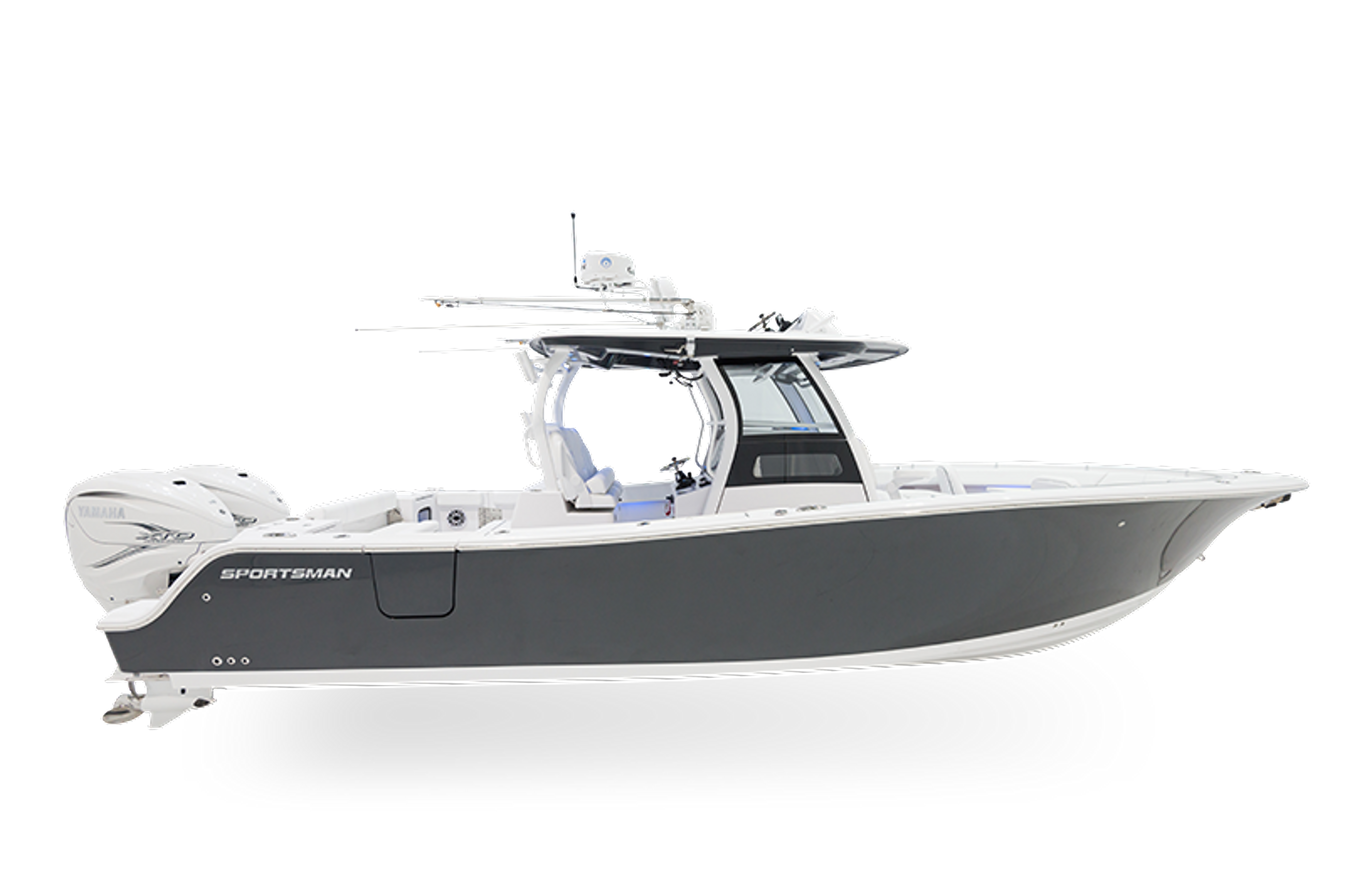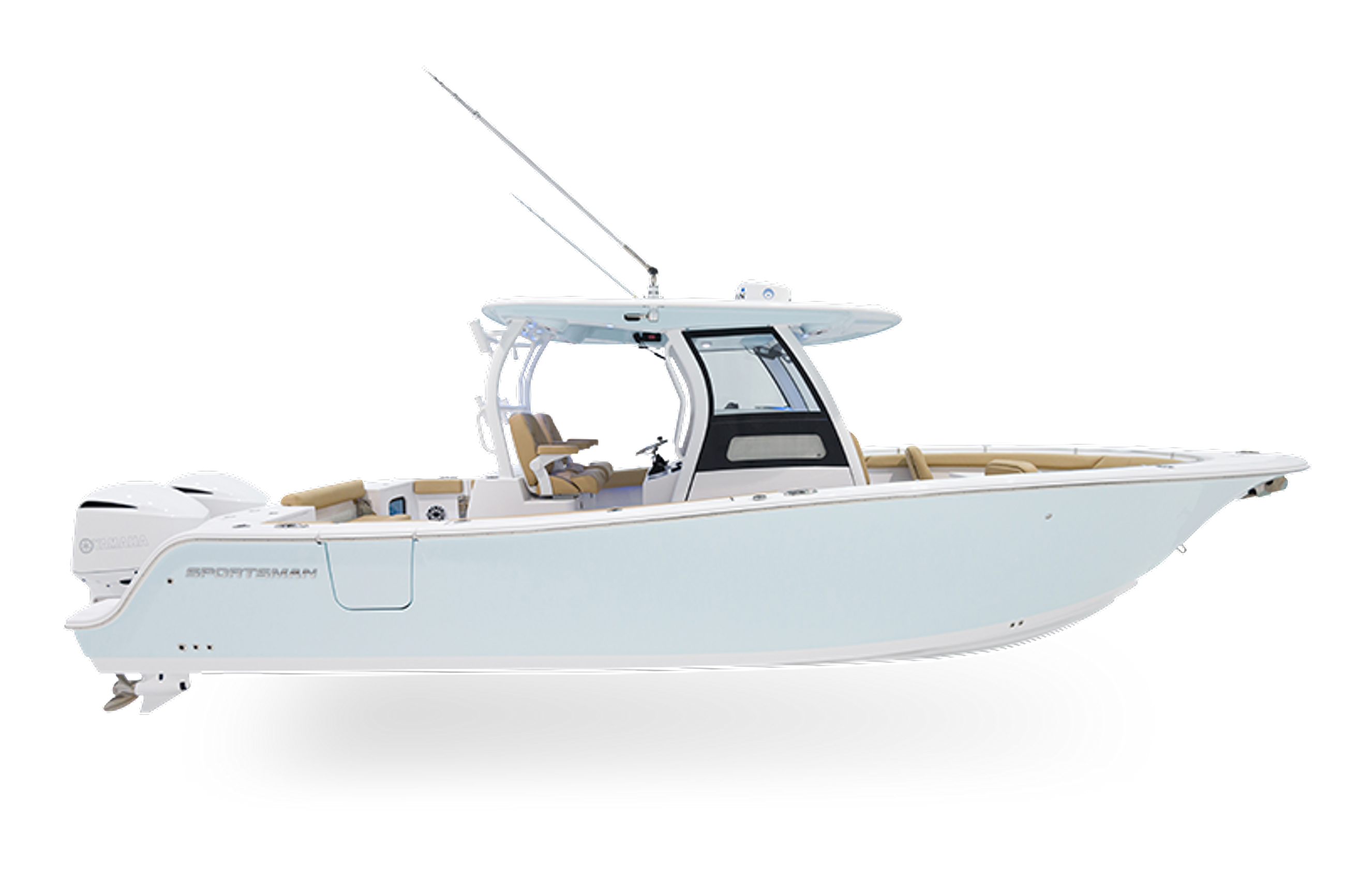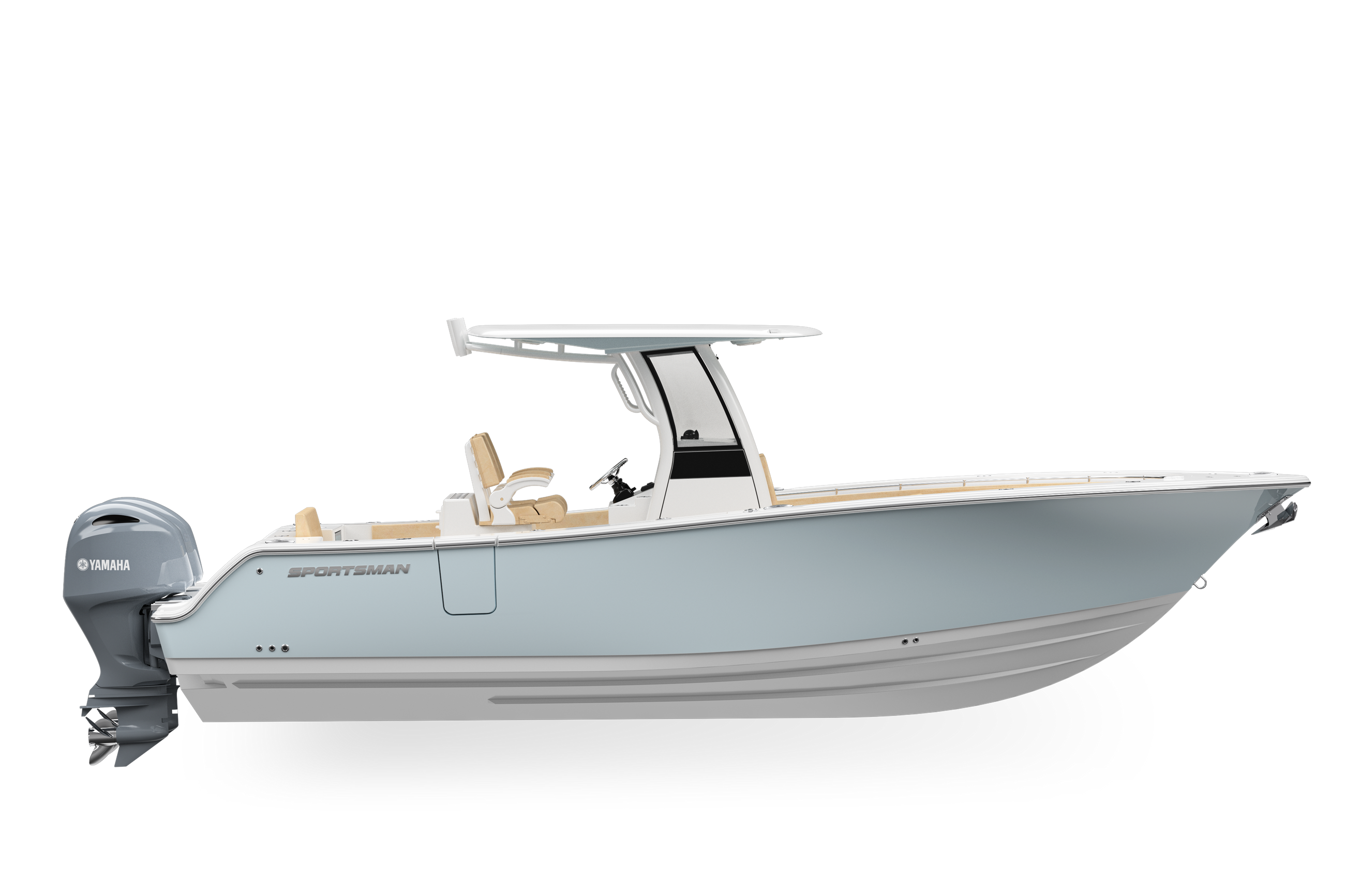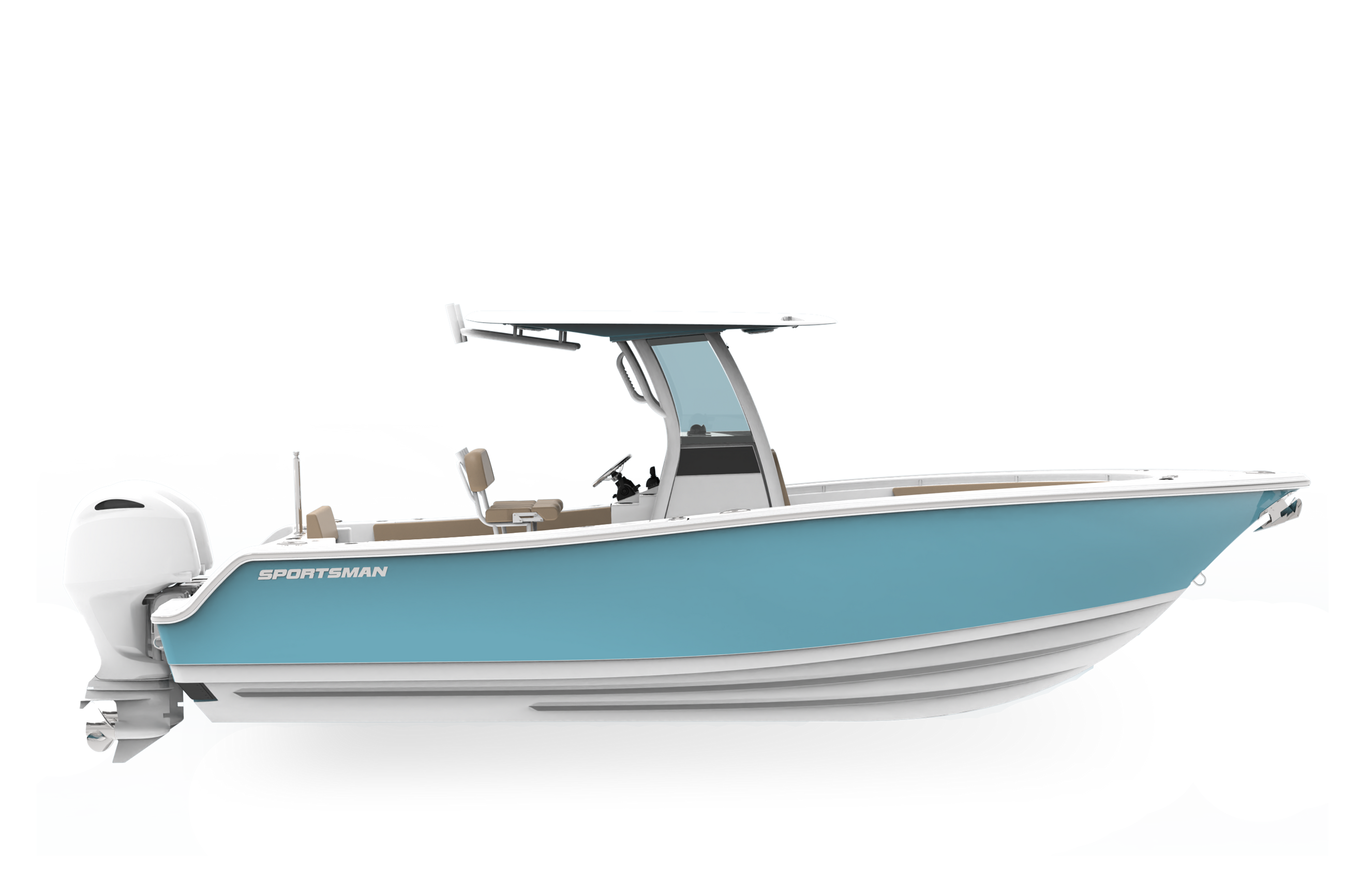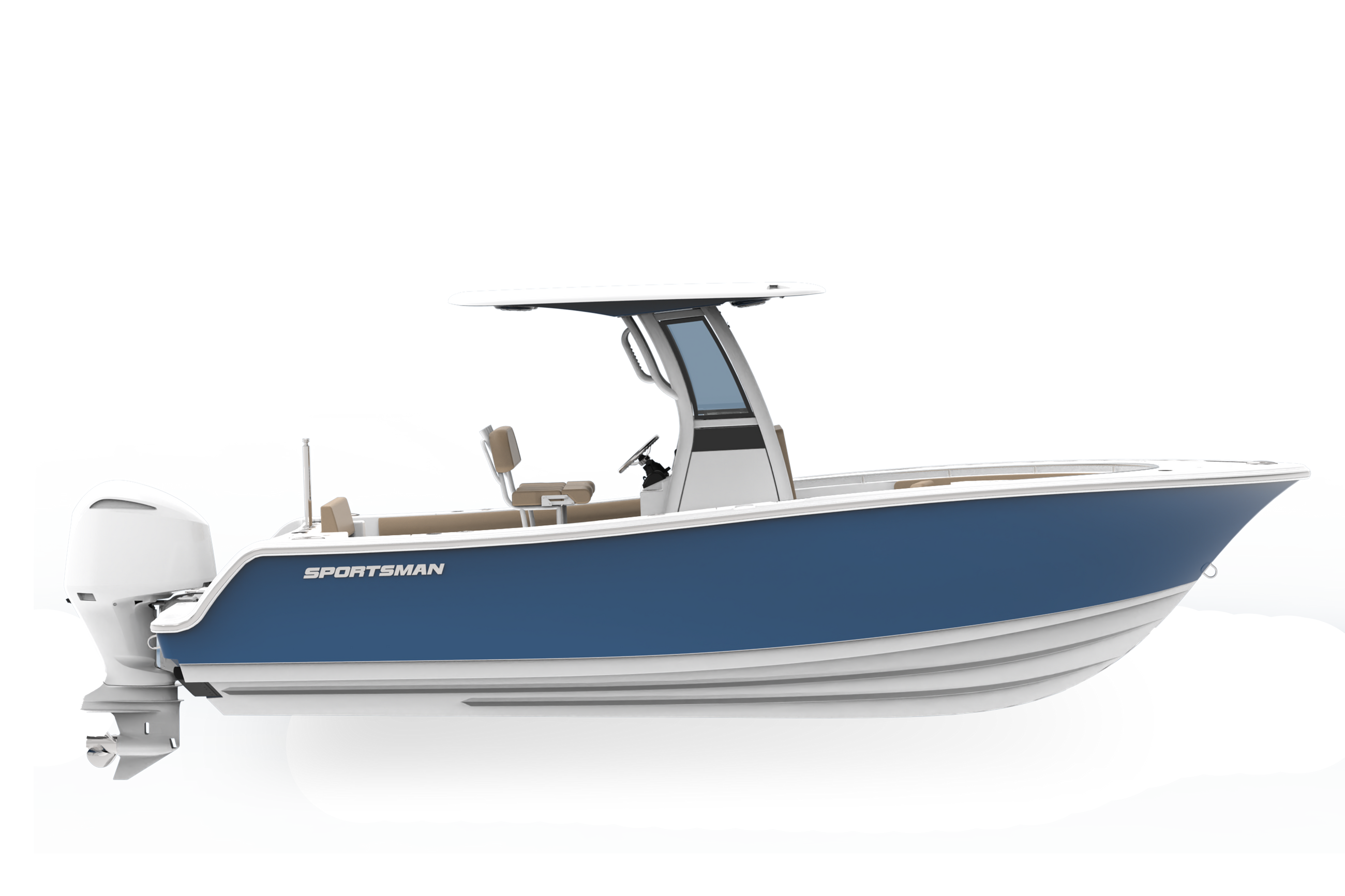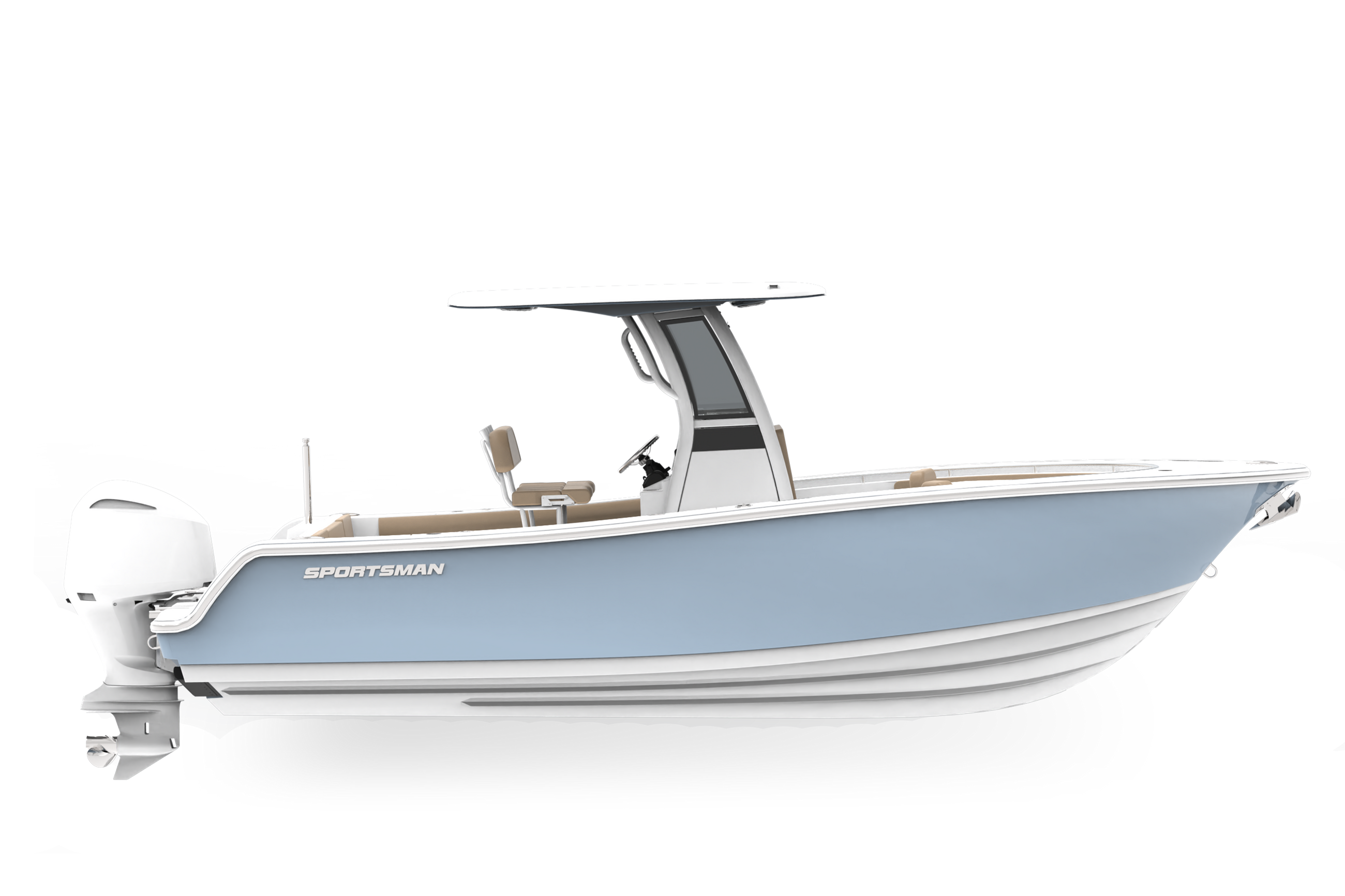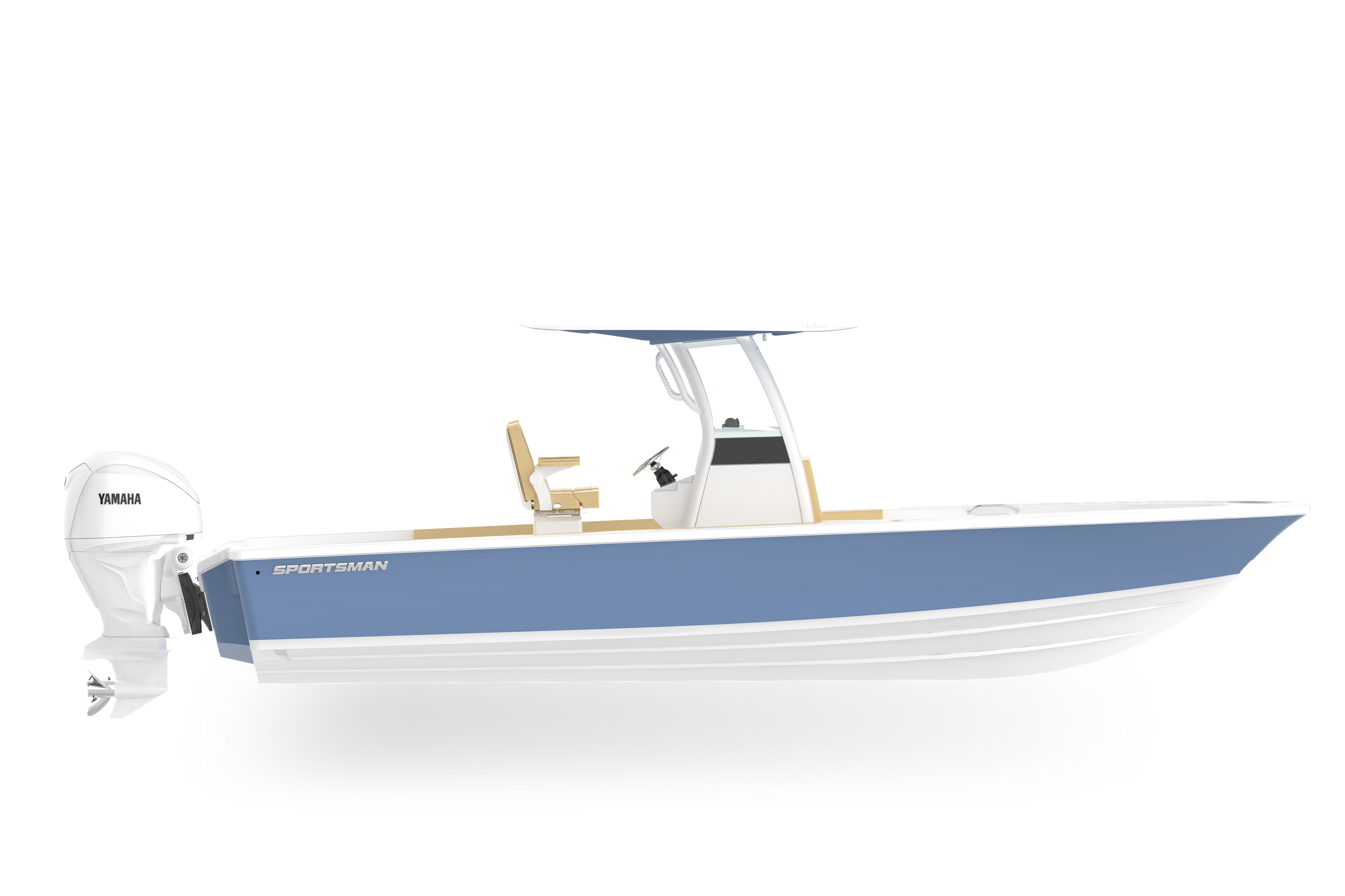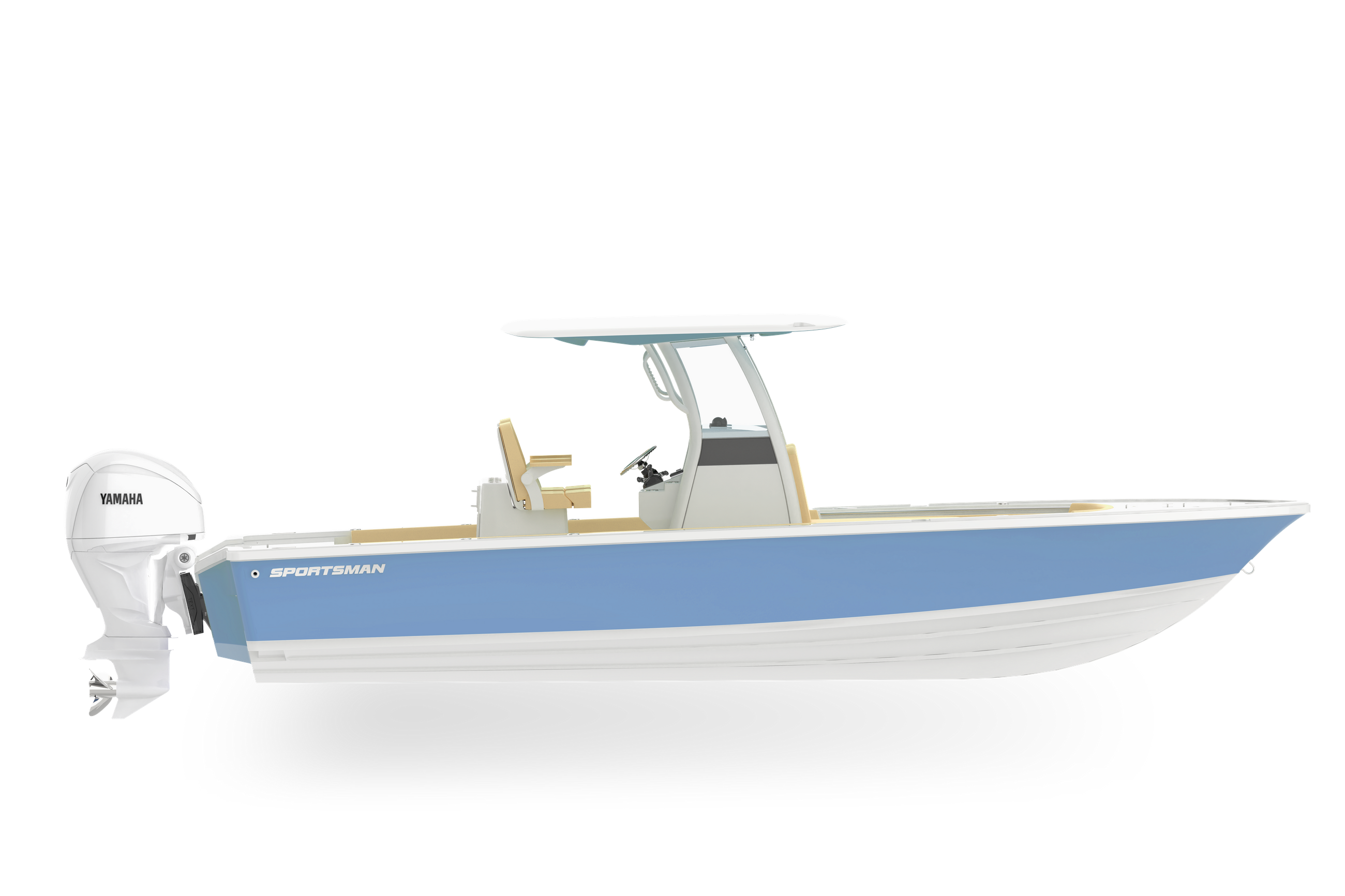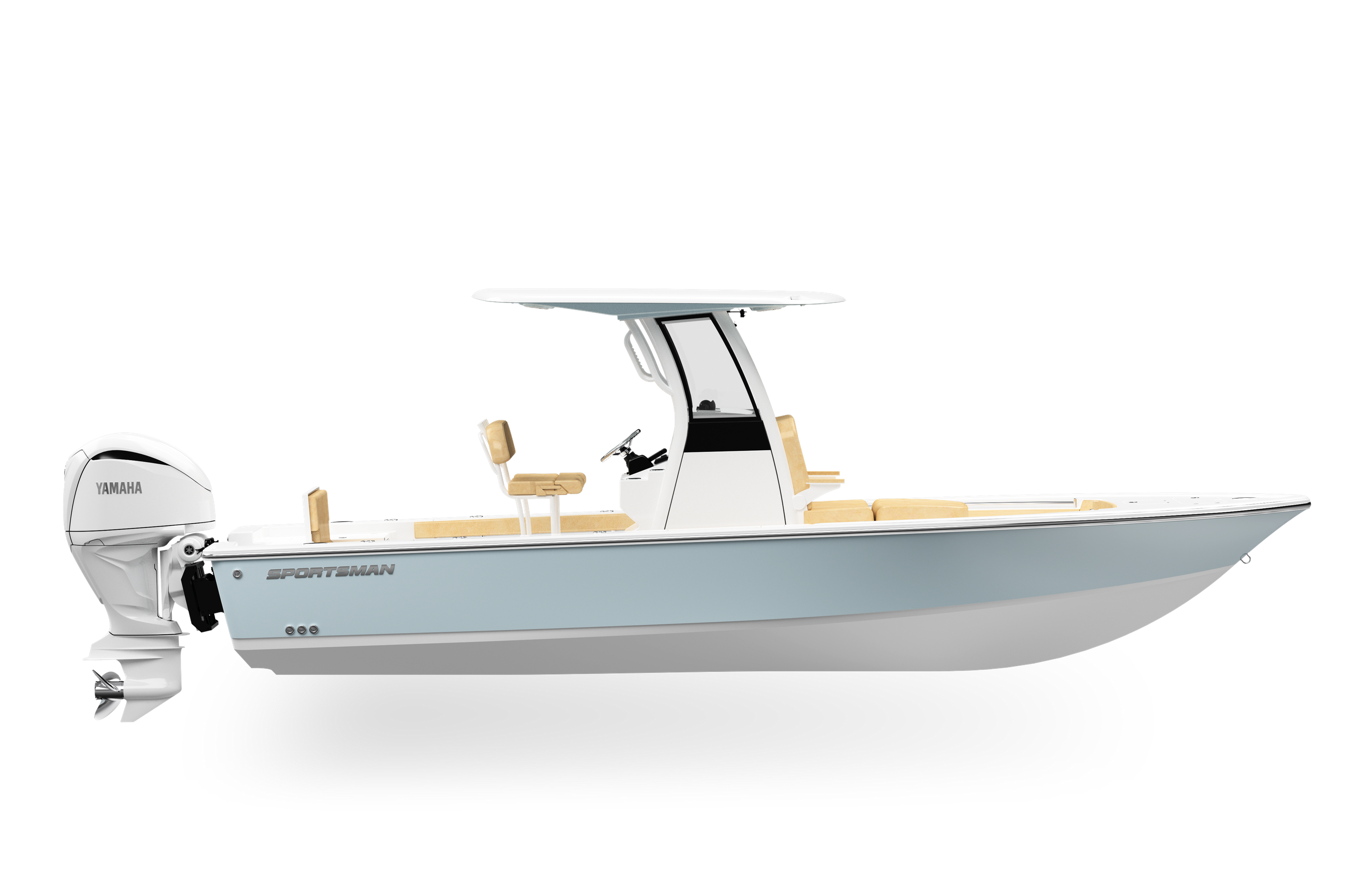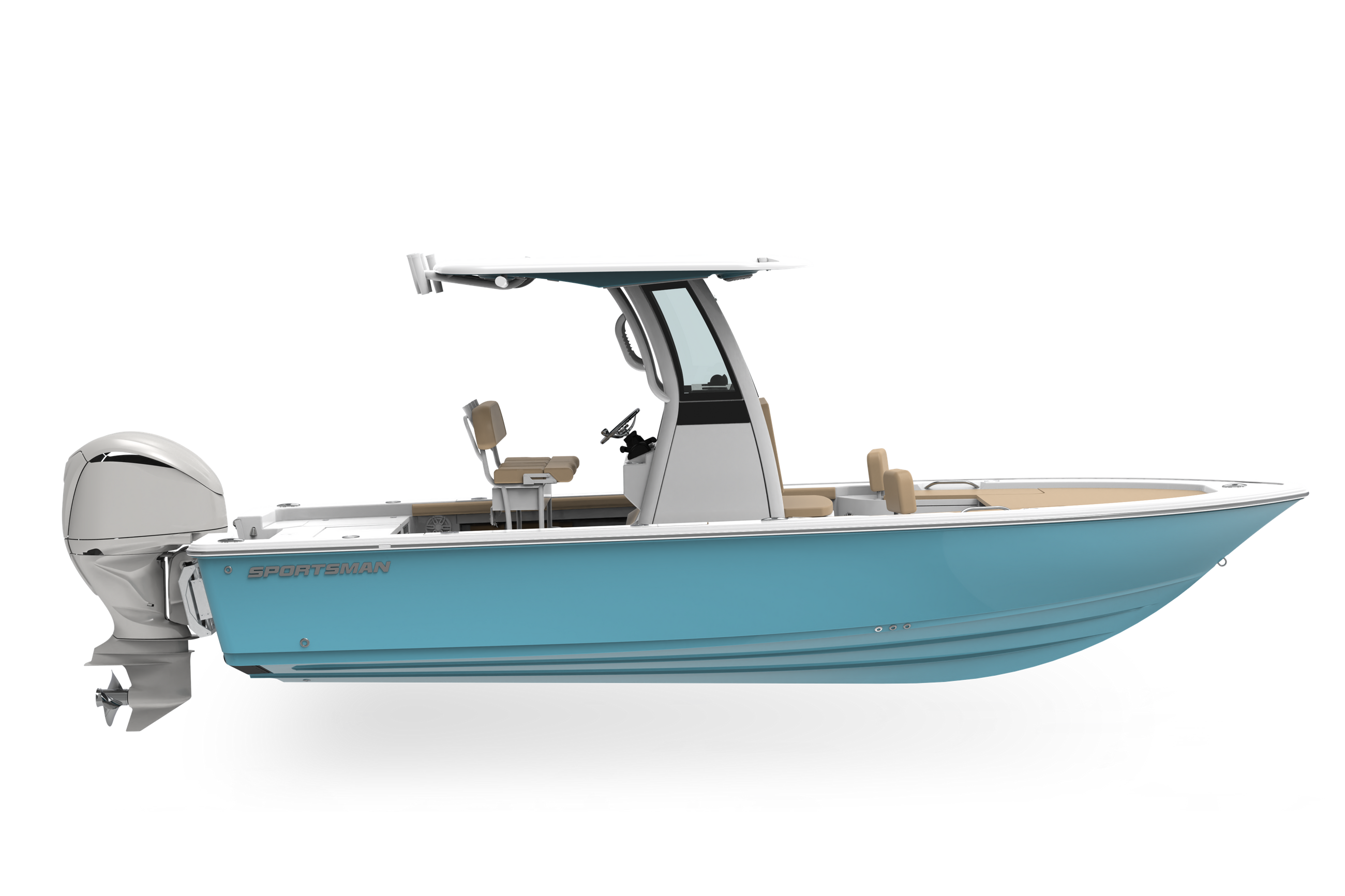Reeling In Doors
You're never 100% sure what you're going to find when you head offshore to bottom fish, with a secret spot in mind we had an idea and we were hoping it would include some African pompano, little did we know we'd be fighting to get through the African Pompano to just have a shot at catching something different.
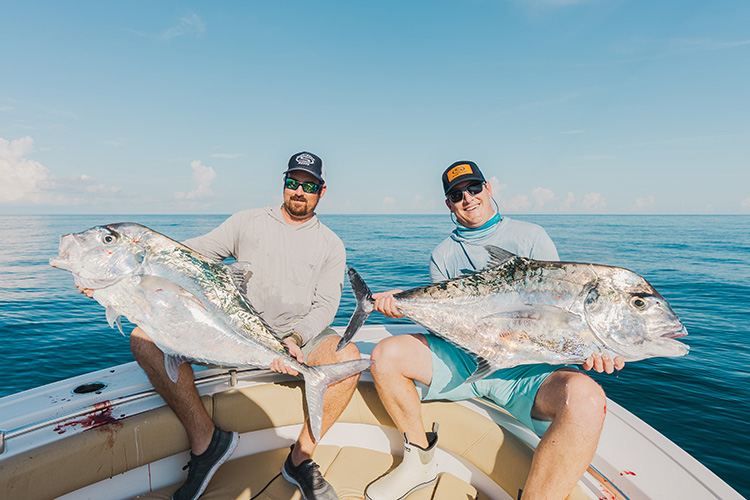
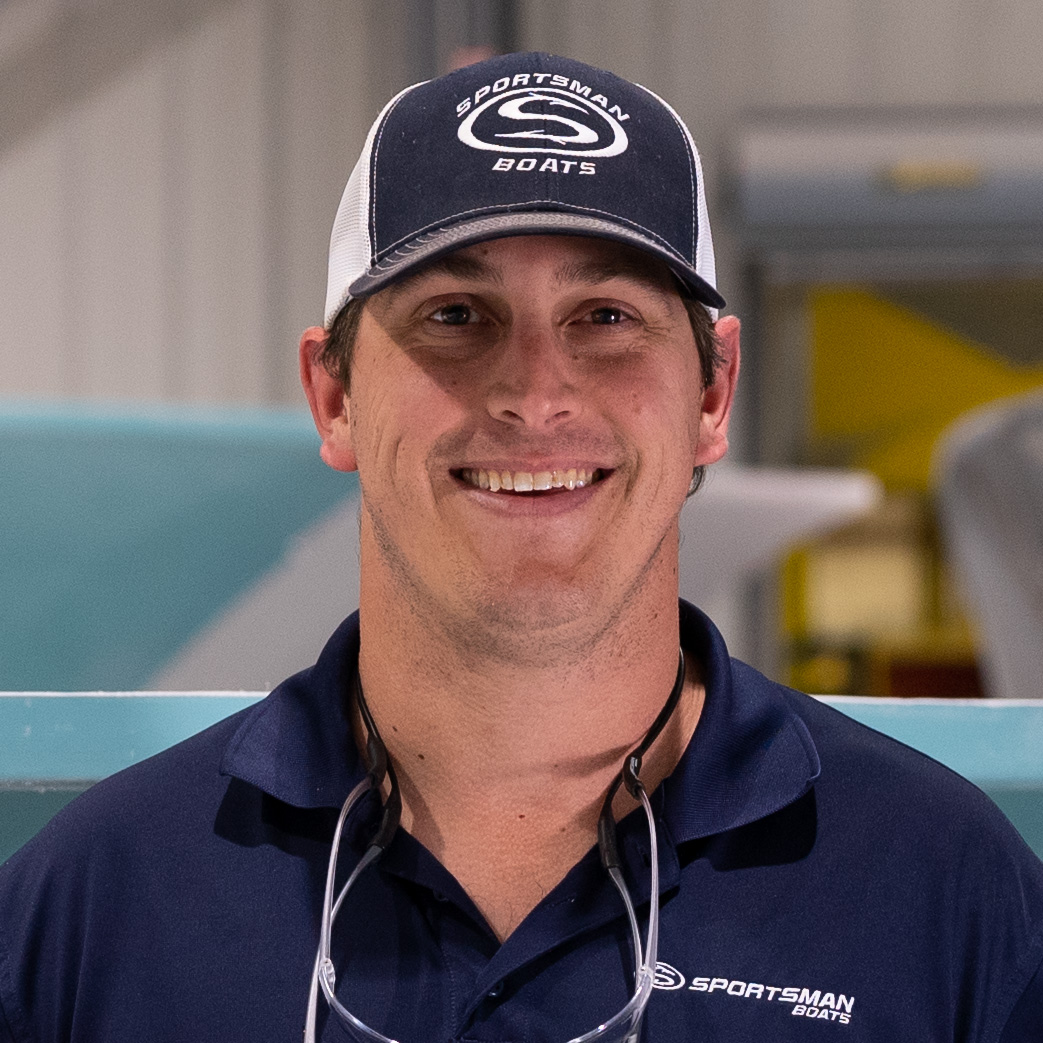
The temperature is hot, and the fishing can be as well. When the dog days of summer start to sink in and the offshore trolling bite starts to slow, the nearshore bite can save the day. I was excited to head offshore in the newly redesigned 2024 Sportsman Open 232 and put it to the test. The addition of Seakeeper Ride tabs, integrated D-tubing hardtop frame with glass windshield and digital switching adds to the already feature rich design the Open 232 has to offer. Combine all of this with the speed and reliability of the Yamaha 300 XSB and this was sure to be an awesome day.
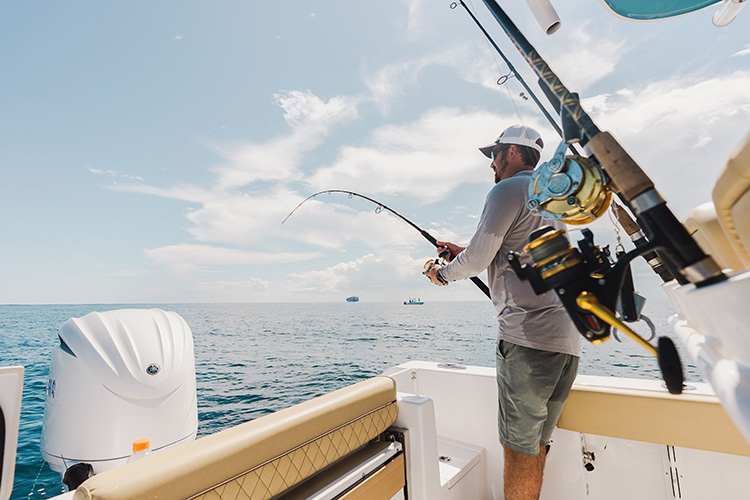
The day started off at 5 a.m. and after loading some gear I was off to meet the crew at Shem Creek boat landing for a 6a.m. departure. I was joined by two Sportsman employees Alex Levy and Michael Cheser. We loaded the rest of the gear and started heading for the ramp. Luckily, we had plenty of storage space because these guys did not pack light. After launching the boat and heading out the iconic Shem Creek we were met with a beautiful sunrise and a hopeful sign of the day to come.
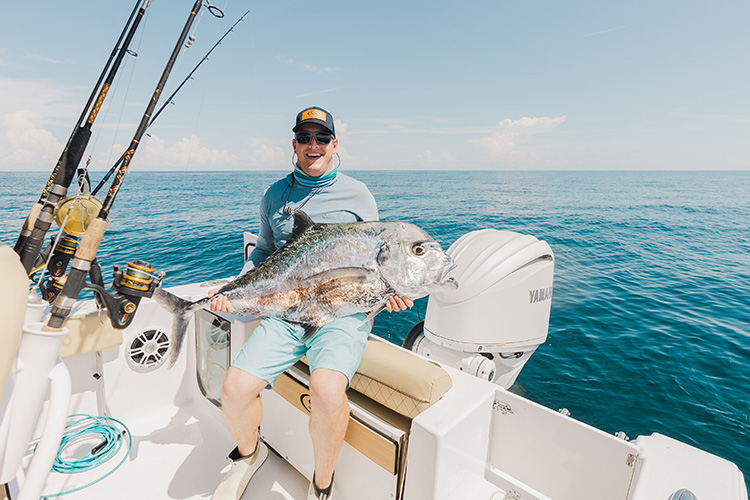
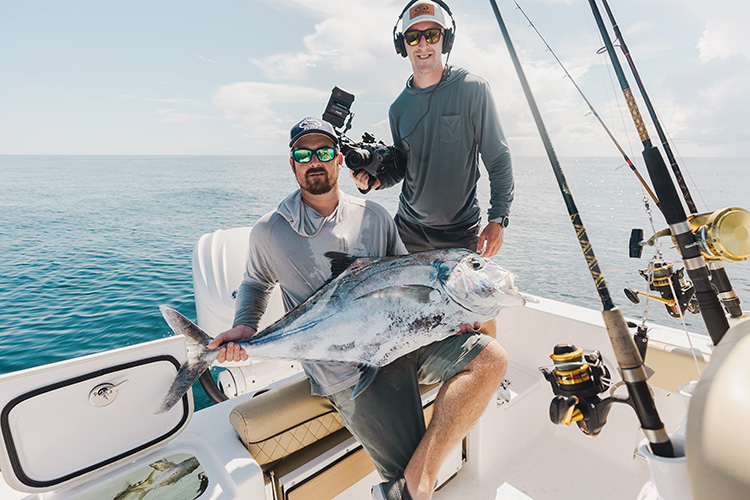
Making the turn in towards the harbor mouth I alerted the guys to keep their eyes peeled for the telltale surface flicks of menhaden schools. These baitfish are readily available throughout the summer months and easy to catch with the use of a cast net. Another plus is almost any gamefish in the ocean will not hesitate to gulp on down. The first throw of the net resulted in plenty of bait and the livewell was full for the day. A second throw for good measure, yielded enough extra bait to fill a bucket for cut bait. I gave the cast net and quick rinse and stowed it under the forward console seat for the day. It is important not to overfill your livewell to prevent issues such as red nose and descaling. This ensures you have the best most durable baits once you hit the fishing grounds.
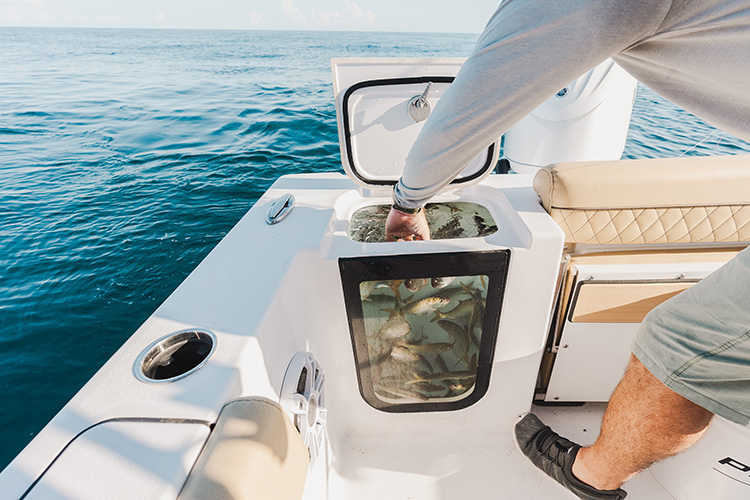
Pointing the bow offshore we were met with a 2-3 ft slightly confused ocean and settled in for the 20-mile trip out the fishing grounds. As I started to increase the throttle and push offshore, I was blown away at the ride control in our current sea state. I finally settled in at a 40-mph cruise and it felt like we were traveling half that speed. The added comfort and stabilization of the Seakeeper ride tabs had once again saved the day. The newly integrated glass windshield allowed us to discuss our plan of attack on the ride out with minimal wind interference. With the Fusion stereo system blasting we made short work of trip and pulled up to the spot ready for battle.
Pulling back on the throttle we were all pumped for the for the fishing yet to come. Preparing for the unknown, I rigged an assortment of freeline rigs, knocker rigs and Carolina rigs to cover all areas of the water column. This trip we did not have a trolling motor so our plan was to establish a drift that would run us directly around the structure on each pass. As we set up our initial drift, I free lined a menhaden out the back just in case a potential customer was lurking nearby. The bait was not in the water for more than 30 seconds and we were hooked up. Alex grabbed the rod and held on as the line screamed off the reel. While he was doing that, I grabbed the knocker rig and put another bait in the water. My bait made it about thirty feet down and bam, we were hooked up with a double. One fish was stretched out the front and one was stretched out the back, it was chaos. Looking over the side, we started to see color on the first fish and right away I knew it was a big African Pompano. These beast of a fish are incredibly strong like reeling in a sheet of plywood. Not only do these fish put up an incredible fight but also provide for an excellent table fare. Fast forward 20 minutes and we had two large African Pompano in the box. Photos do not do these fish any justice and as the sun beams off their mirror like skin you can see their true beauty. Glancing back at the sounder, I can see that we are still marking fish and it is time to get the bait back in the water.

Over the course of the next 2 hours, we caught 1 African Pompano after another, and the action never ceased to stop. There were points when I looked over at Alex and he was exhausted and looked ready to give up. I would make him drop another line and the fight was back on. At one point, we were trying to get away from the African Pompano and only deploying baits when the sounder was not marking anything but that did not work. In the back of our minds neither of us really wanted to stop catching them but we were exhausted at that point. A couple times we were able to use a heavier weighted Carolina Rig and drop past the schools which did result in several Red Snapper off the bottom. This gave us the opportunity to practice using our Seaqualizer descending device and safely deliver the snapper back to the bottom unharmed. On a side note, a 3lbs weighted Seaqualizer will also successfully descend 40 + lbs. African Pompano, we checked. The longer we fished the bigger they got and at one point 40 – 50 lbs. African Pompano were hitting coming over the gunwale. As the day went on, we landed around 15- 20 monster African Pompano and kept three for dinner. I am a firm believer in only harvesting what you are going to eat to keep our fishery in the best shape possible. Offshore of us a thunderstorm was starting to creep up on us.
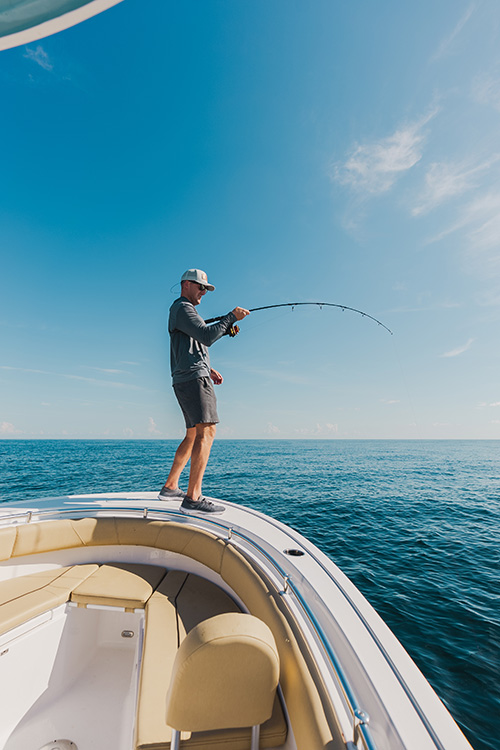
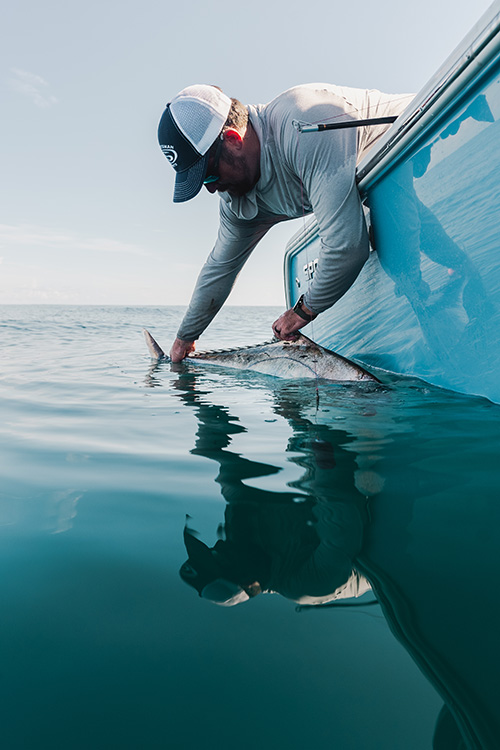
My crew was drenched with sweat and worn down from the day’s action, so the decision was made to head towards the hill. Once again, we were able to cruise home around 40 mph and made short work of the now flat seas. Pulling back up to the ramp we were all smiles and could not have asked for a better day out with friends. We never expected that the African Pompano bite would be that hot, but I am glad we were able to take advantage of it. Sometimes the ocean throws the unknown your way and you must be prepared for anything. We were not only able to feed our families fresh fish for the next several days but also share it with our co-workers. I am already looking forward to the next trip and ready for the next adventure.

